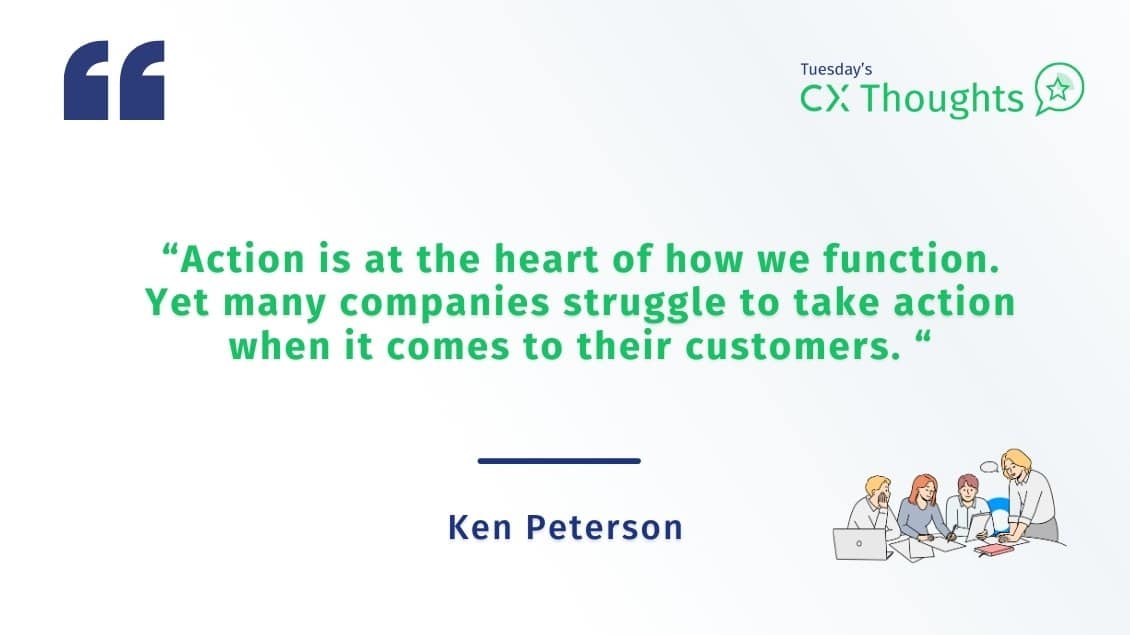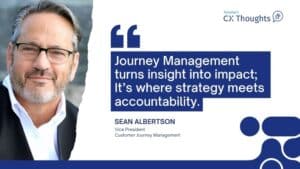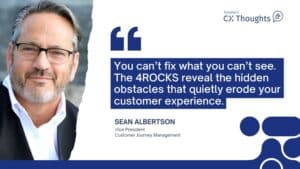
In today’s TCXT, we take an introspective journey into the meaning of taking action in situations that can affect or drive your Customer Experience. Every week, Ken Peterson, CX Director at QuestionPro, invites us to question our daily actions and begin to make changes that impact our consumers’ experience. We are confident that the video summary and the article we have prepared for you will be of great value.
What do you do when you are not feeling well? You may ignore it for a few days, but imagine it does not improve or get worse. What is next? Scheduling an appointment with your doctor? That is an appropriate plan of action, right? Is that enough, or do you actually need to show up for that appointment for it to be considered that you took action on your health? Or did you not really take action until you followed the doctor’s advice or took the medications as prescribed?
Action… is at the heart of how we function—in life, family, and business. Yet many companies struggle to take action when it comes to their customers.
I was recently asked to write a chapter in a book regarding the use of customer experience to take action. It was interesting to start some research into that chapter. Being the time we live, the first thing I did was to ask Generative AI to give me some thoughts about “action” in customer experience. What struck me is that nothing that was spat out of the response had anything to do with contacting a customer. There were terms like creating an “action plan” and discovering “actionable insights”. There were also sorts of suggestions about the elements of a customer experience program, yet none of these suggestions spoke of closed-loop feedback or action management.
I have heard these stories all the time:
- We took action; we hired someone to lead the customer experience function
- We took action; we licensed a customer experience management platform
- We took action; we took all the steps to implement that CX survey
- We took action; we trained all the store managers on how to read dashboards
- We took action; we had managers train frontline employees on the importance of keeping customers happy and getting good customer experience scores
- We took action; we provided incentives to improve customer experience scores
- We took action; we ran a driver analysis to determine the most important attributes
- We took action; we communicated which attributes are the biggest indicators of happy customers and retention
I could continue with the “action” steps that companies take to retain their best customers, but if the customer is not at the heart of these actions, is it really customer-centric? We’ll hear terms like “actionable insights” and “prescriptive analytics” to tell senior management the steps that need to be taken. Are they really following the instructions for the prescription? Or just reading the label?
One of the best things that can be done with customer experience programs is to engage the customer in a dialogue. That is a two-way conversation where questions are asked, responses are received, and clarification is sought on the way to finding common ground. An organization can start those conversations with a closed-loop feedback workflow in many ways.
However, too often, these workflows focus almost exclusively on detractor recovery (though some do not even do that; they just inform the front line that their scores have gone down). Sometimes, the workflow does not even consider interaction with the customer – using privacy, regulation, or some other justification to opt out of contacting the customer. Automation is put in place to write generic apologies to those who express dissatisfaction (which I might contend actually creates more overall dissatisfaction).
Even further action can be taken by recognizing customers who provided positive feedback or helpful insights. Recommend to those customers that they write a review so more people can see the company’s potential for other like-minded customers. Give them an opportunity to announce their loyalty to the company.
Taking action is easy – as long as the workflow allows for it. Those tactical actions are just part of the action that needs to be understood by companies. You also need to create broader strategies that eliminate problems before they occur. That can be done through an Outer Loop process that brings varied departments together with support from employees across all levels of the organization.
If you want to learn more about these two types of action, I encourage you to review more material on our website here or contact one of our many customer experience experts. Otherwise, you just pay for the prescription (subscription) and throw it in the drawer. It feels like action, but it will not heal the problems.
We hope this reflection has provided you with valuable information to find the solution you are seeking and to take your customer experience to new levels. If you need assistance, you can contact us. We would love to hear about your challenges and work together to find a solution to provide your clients with the attention they deserve. Until next week!









